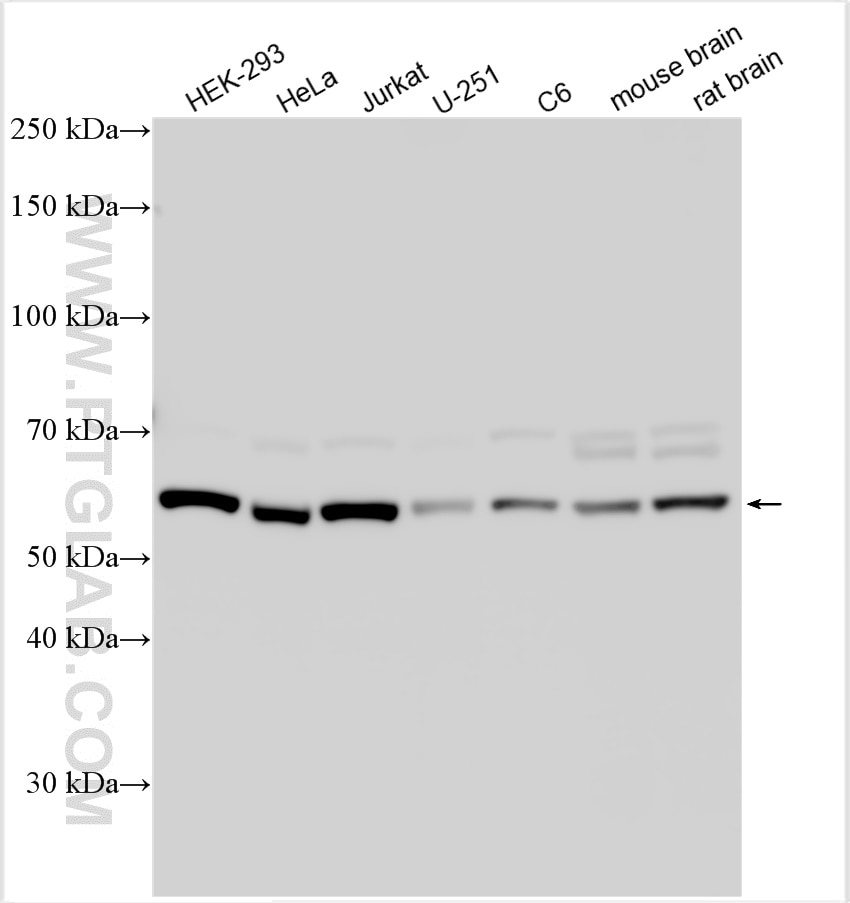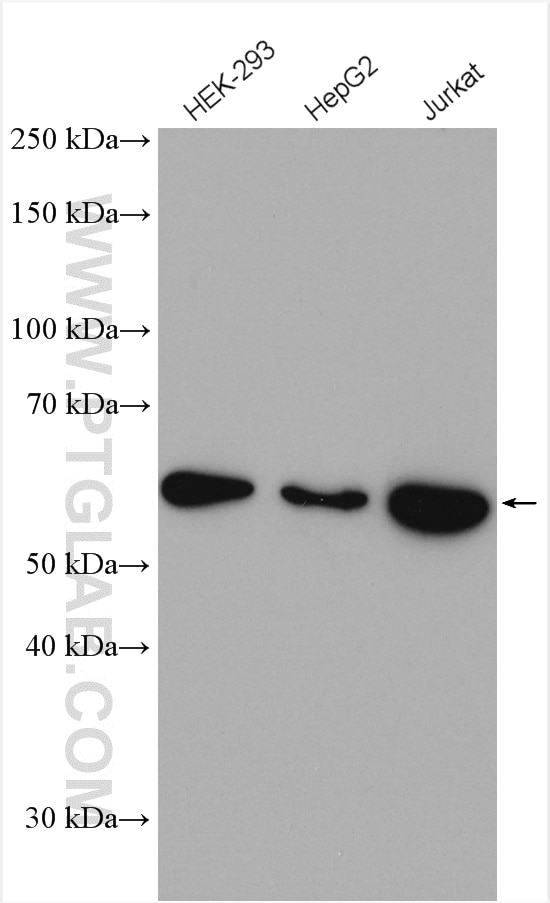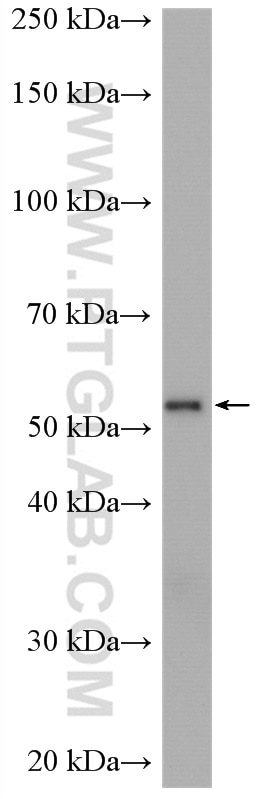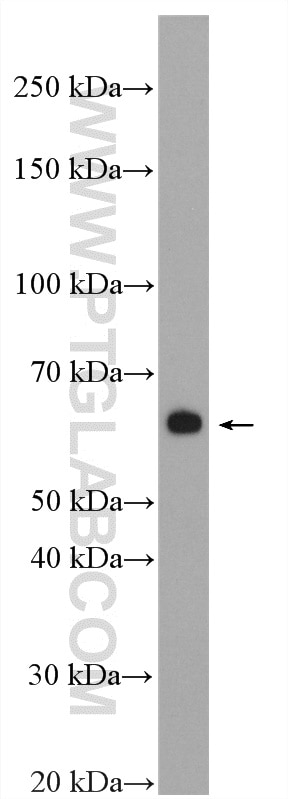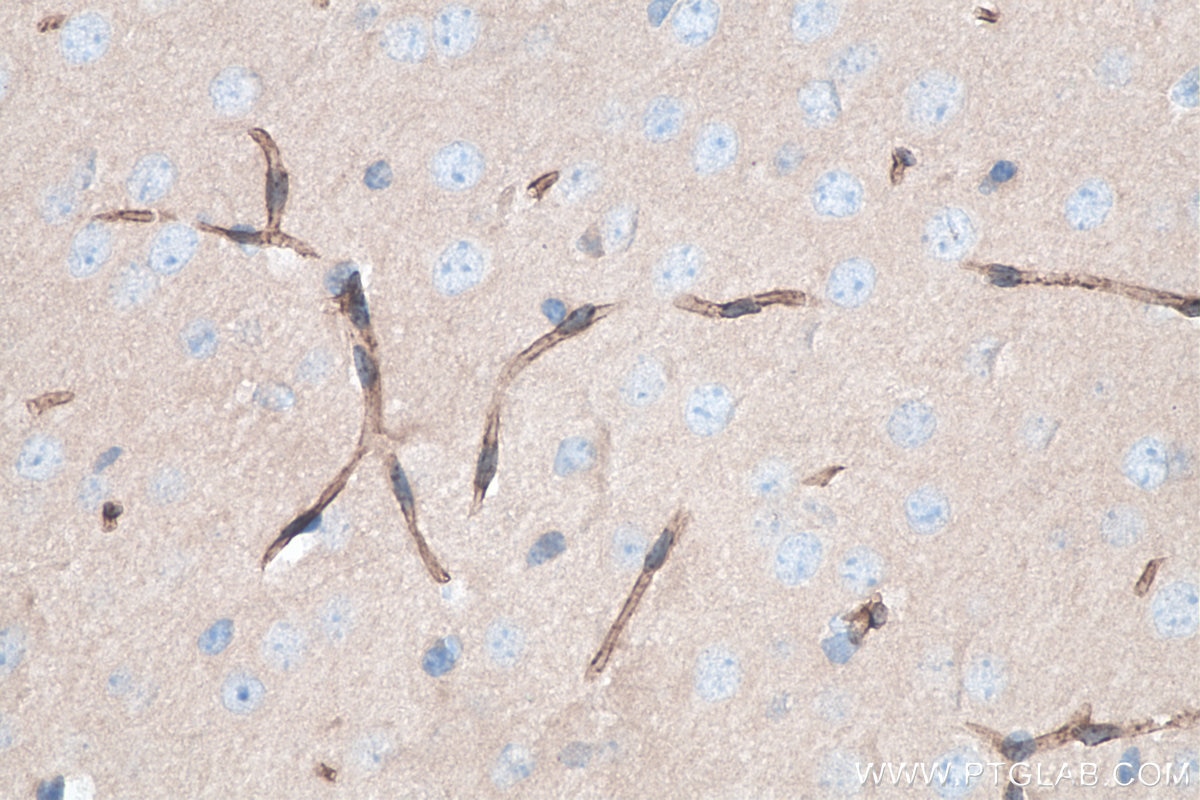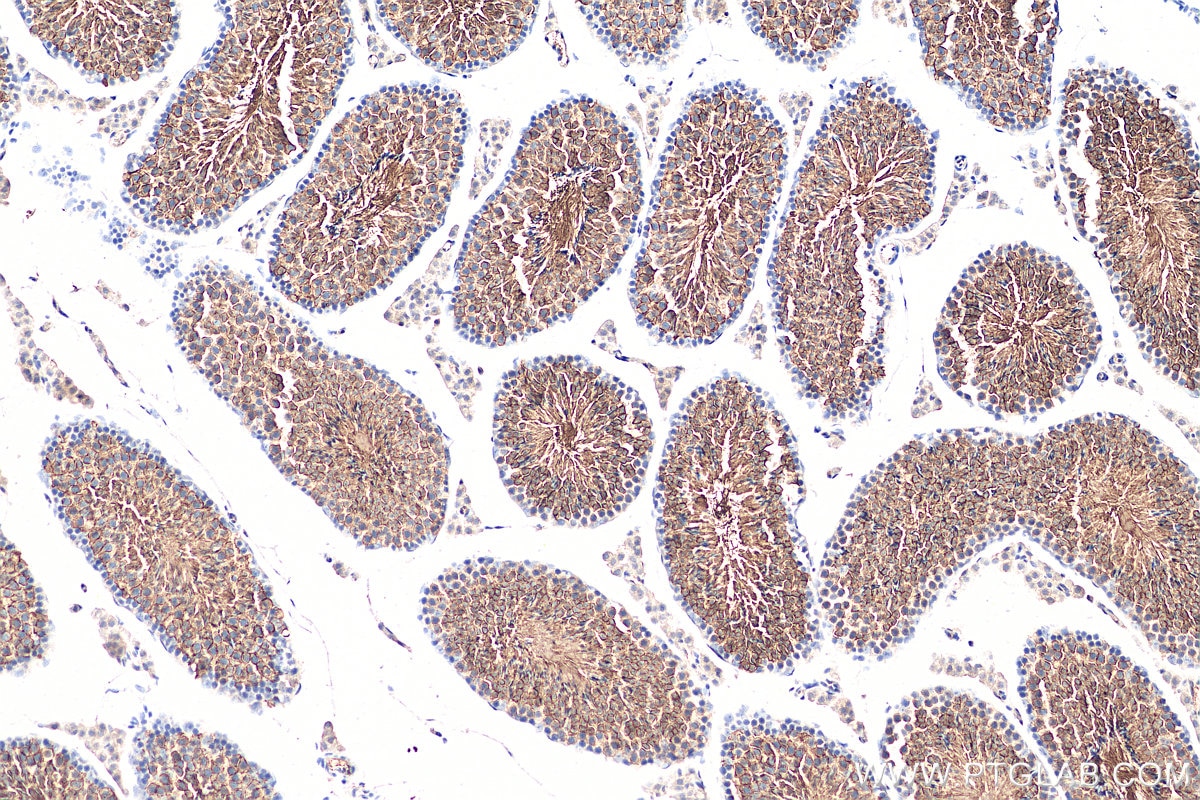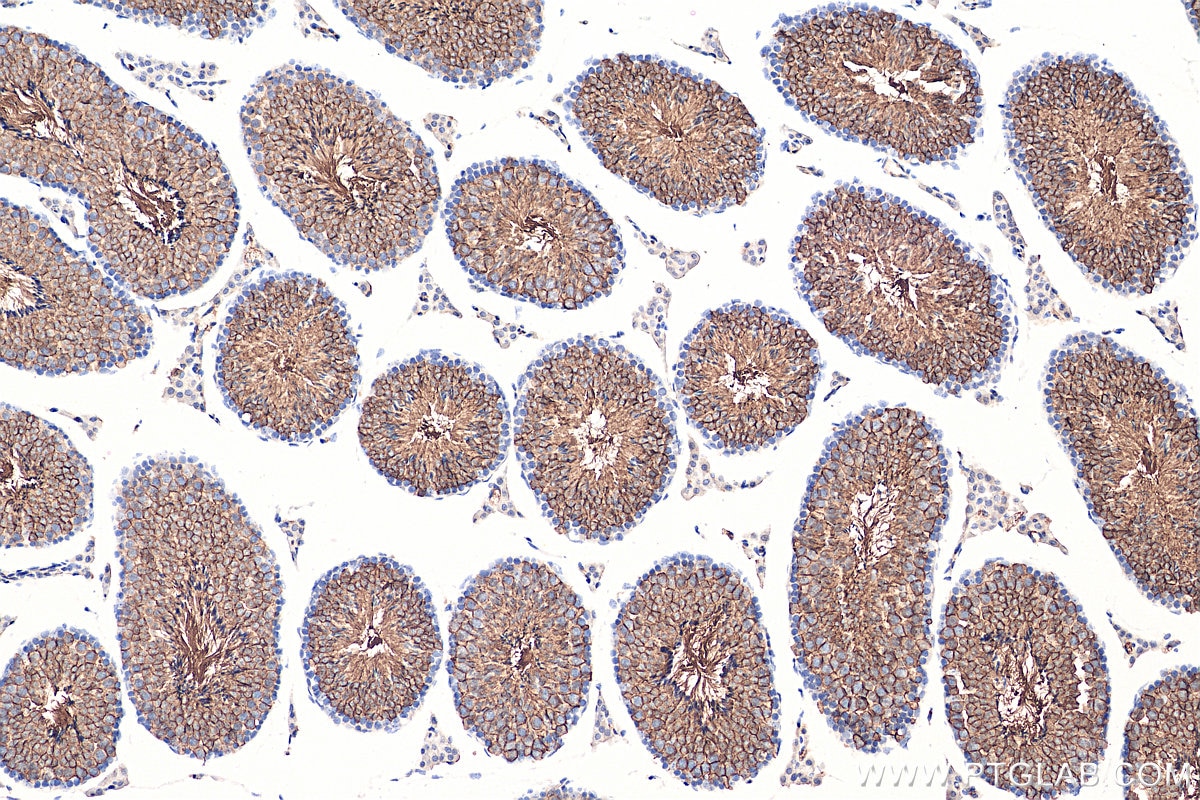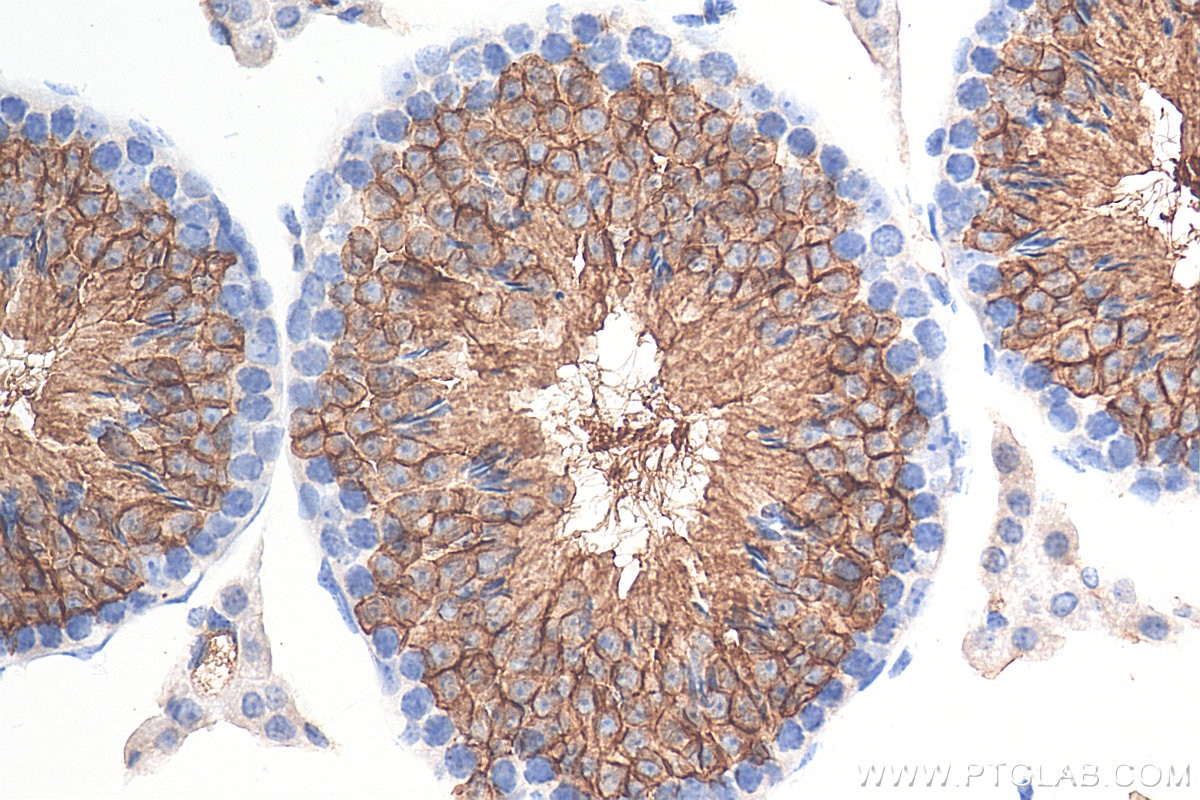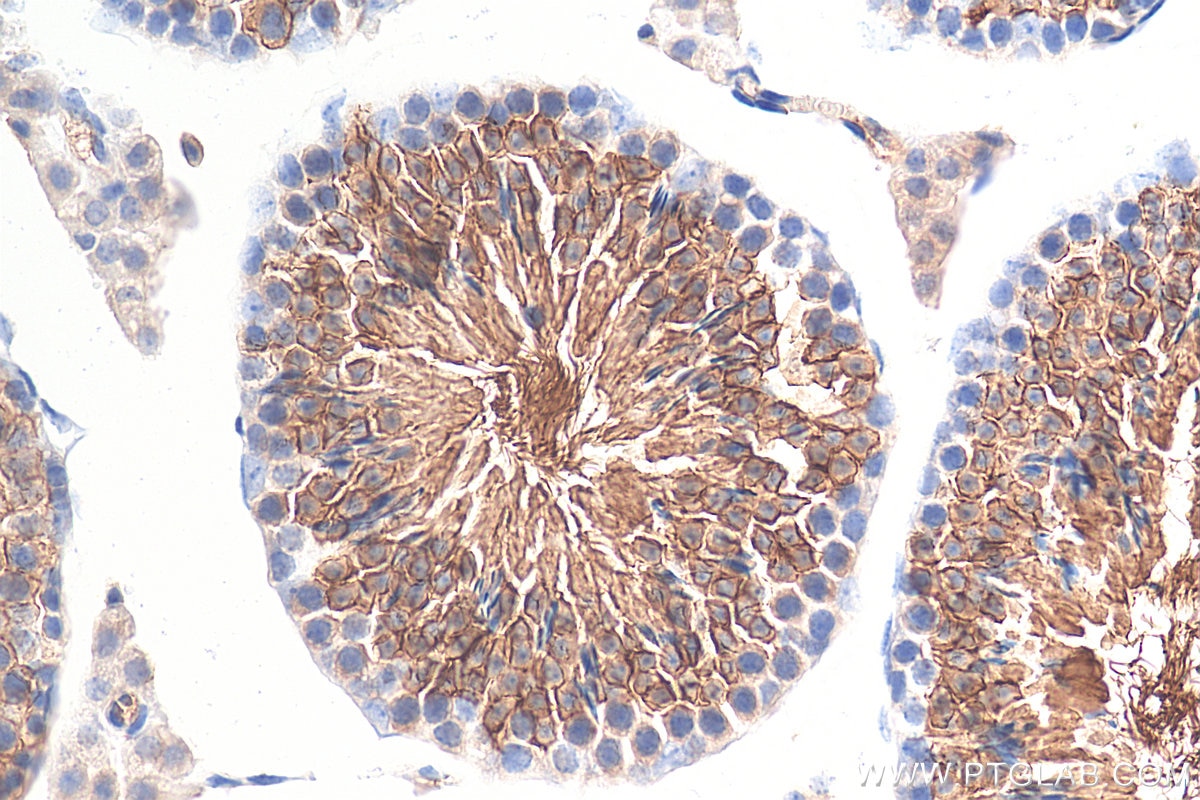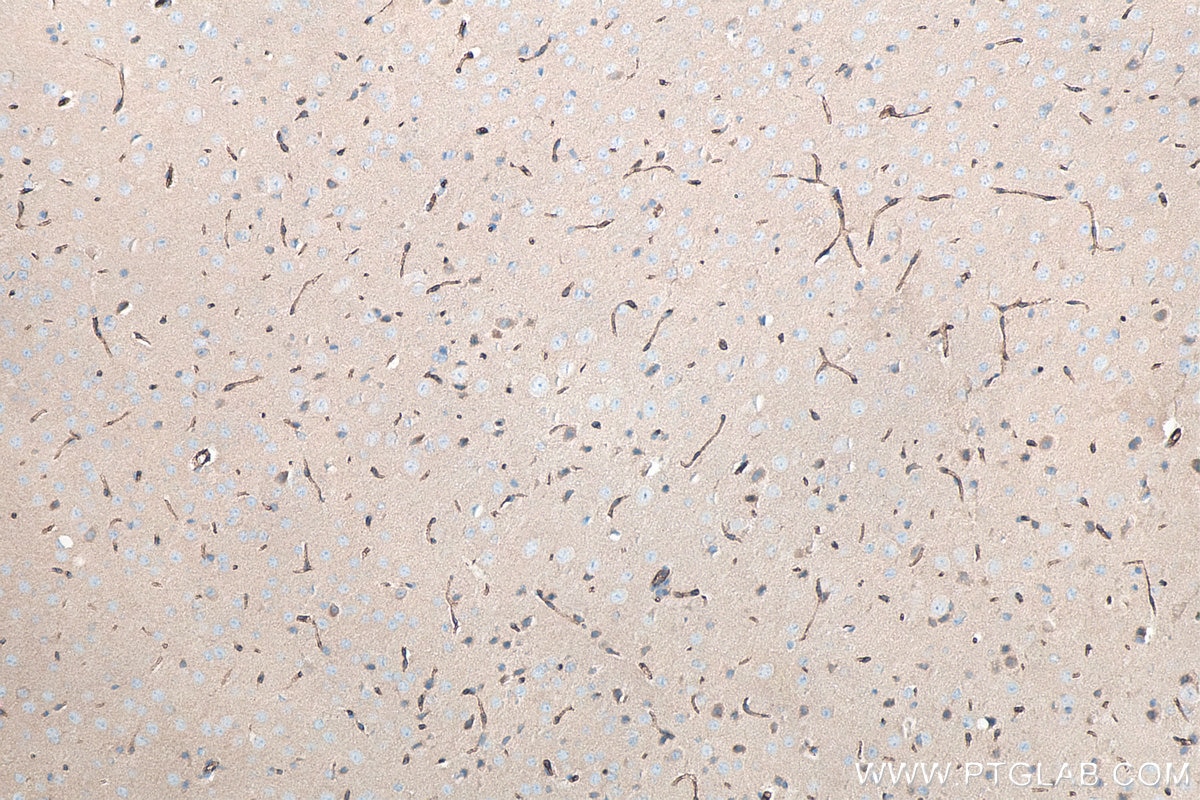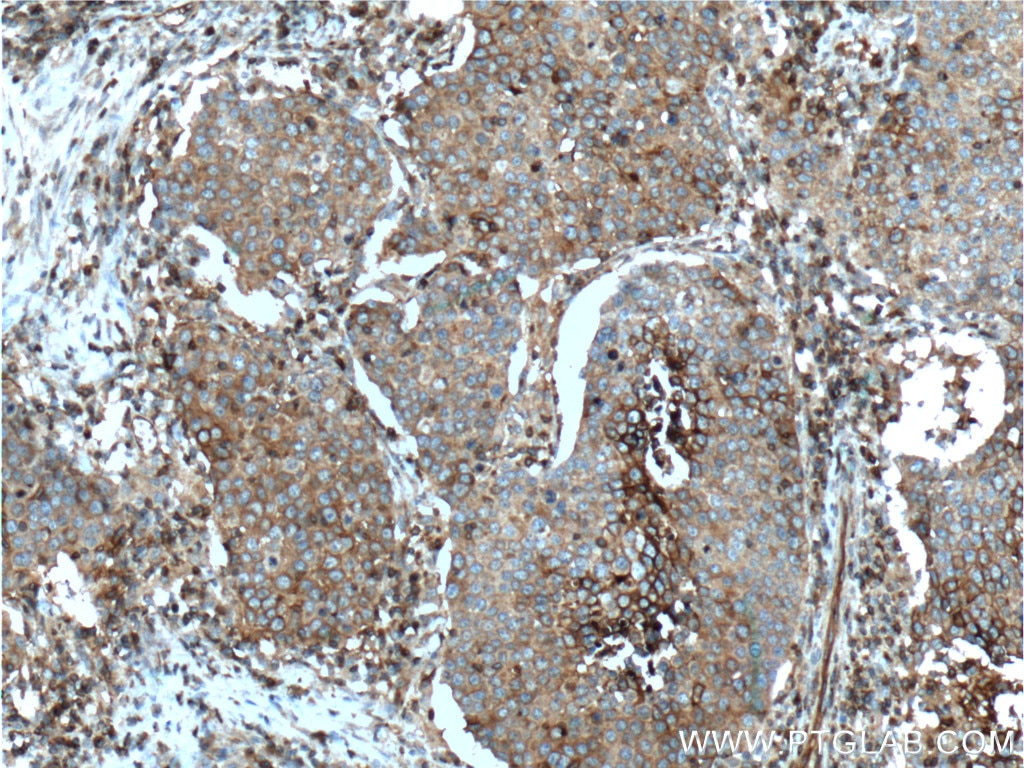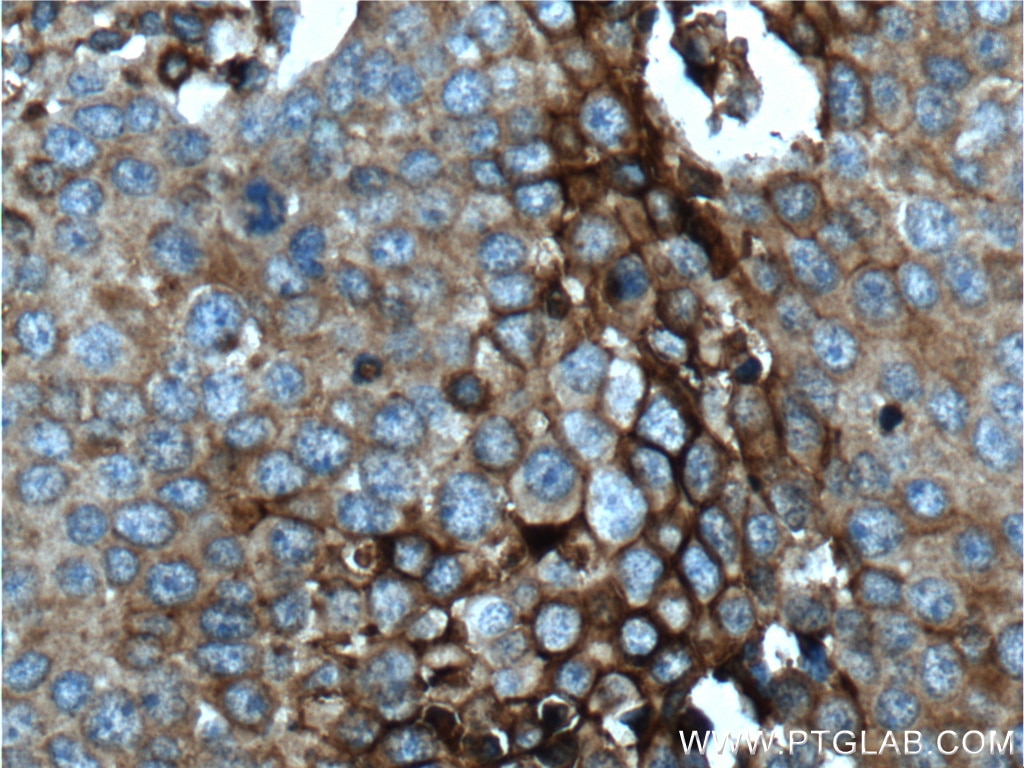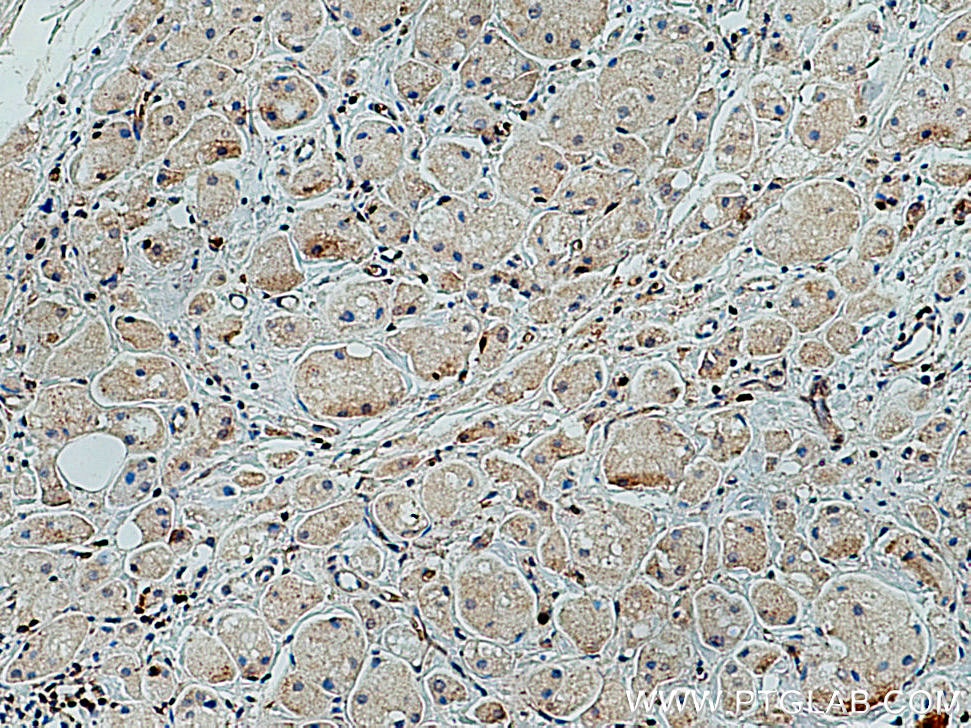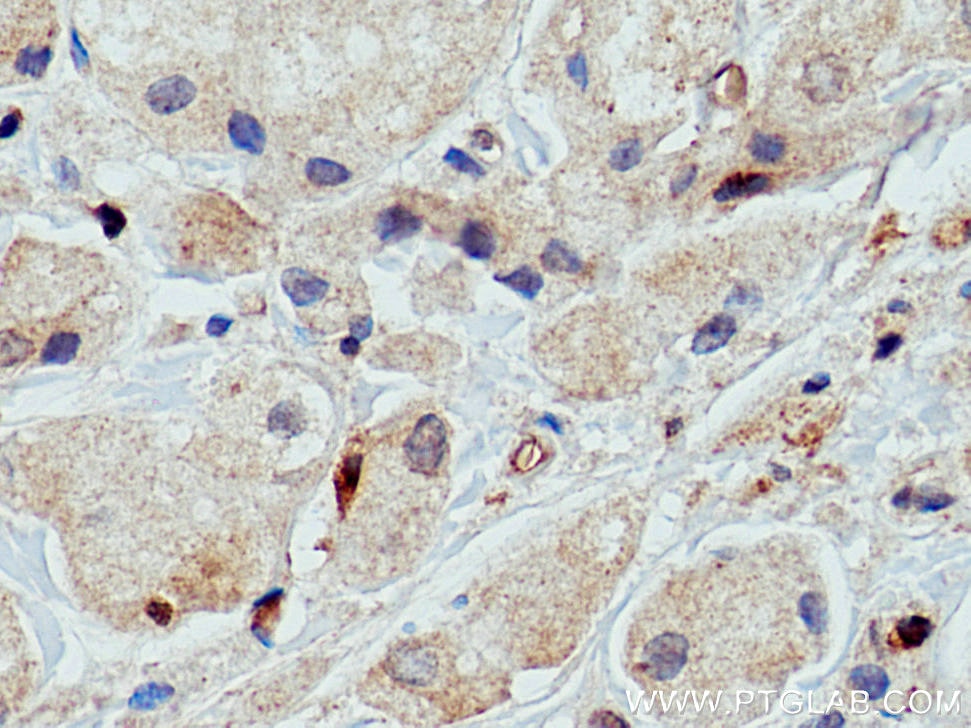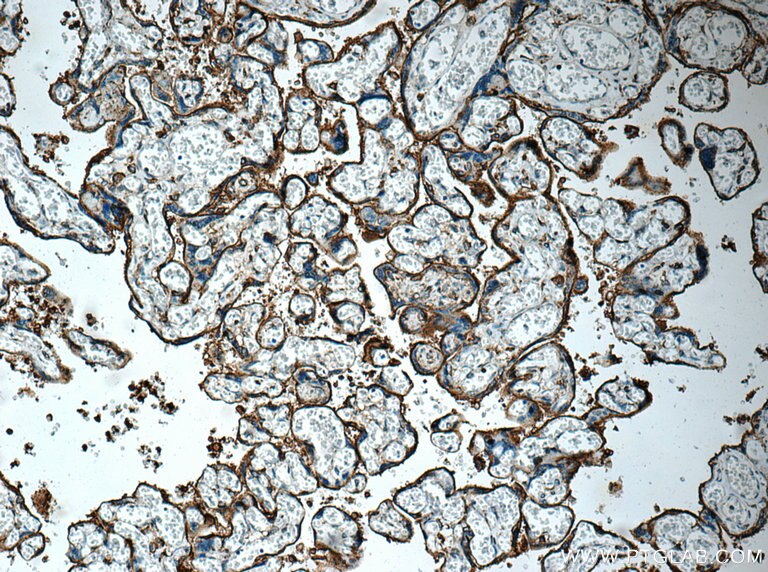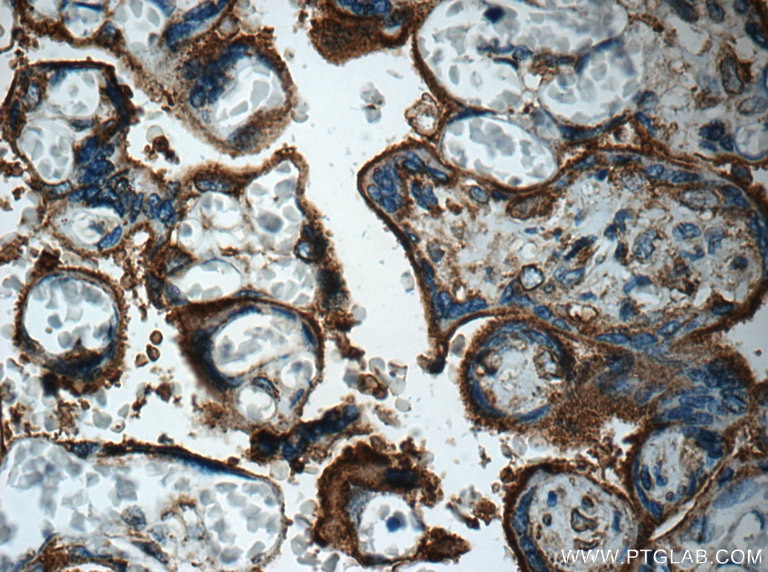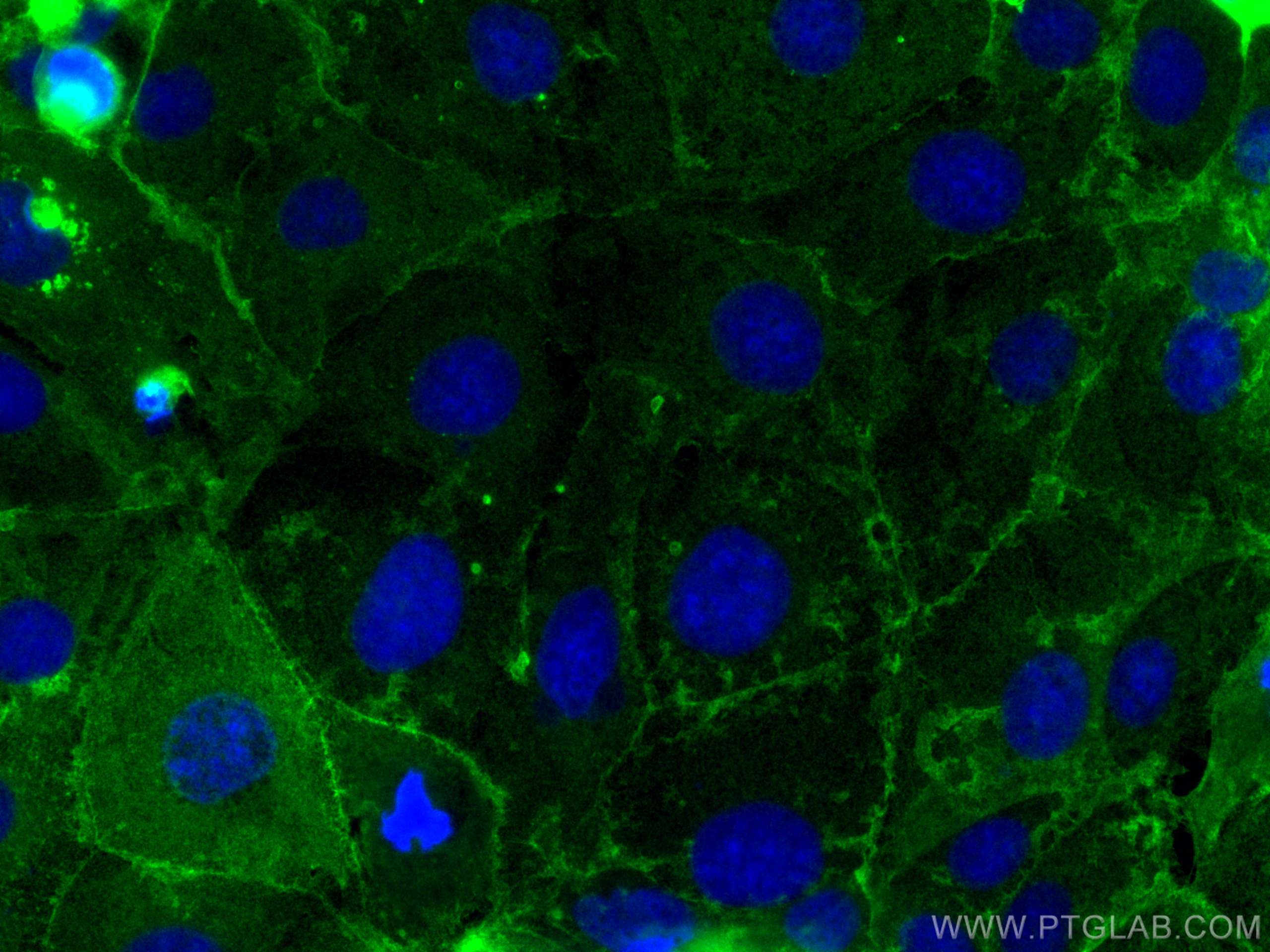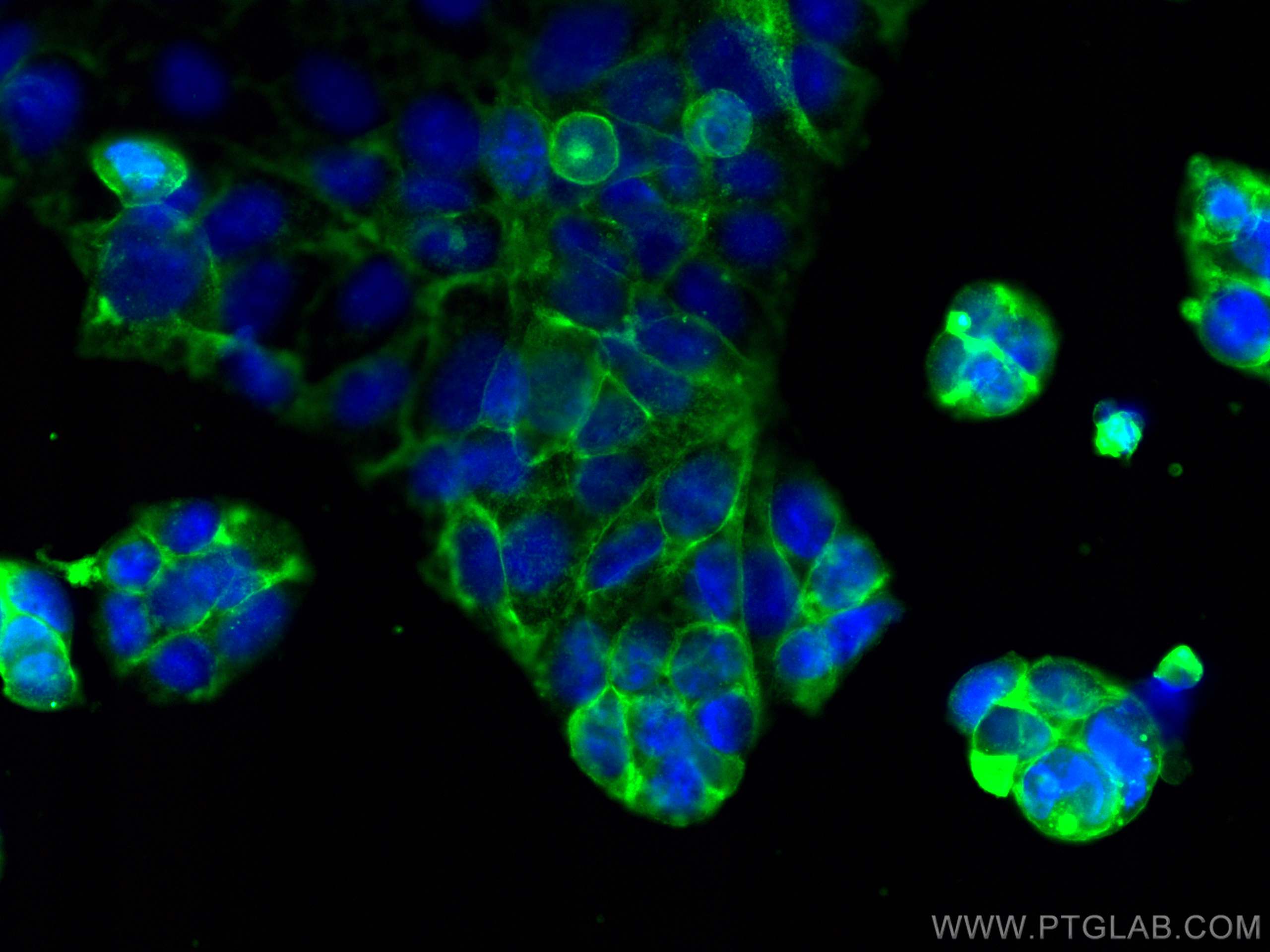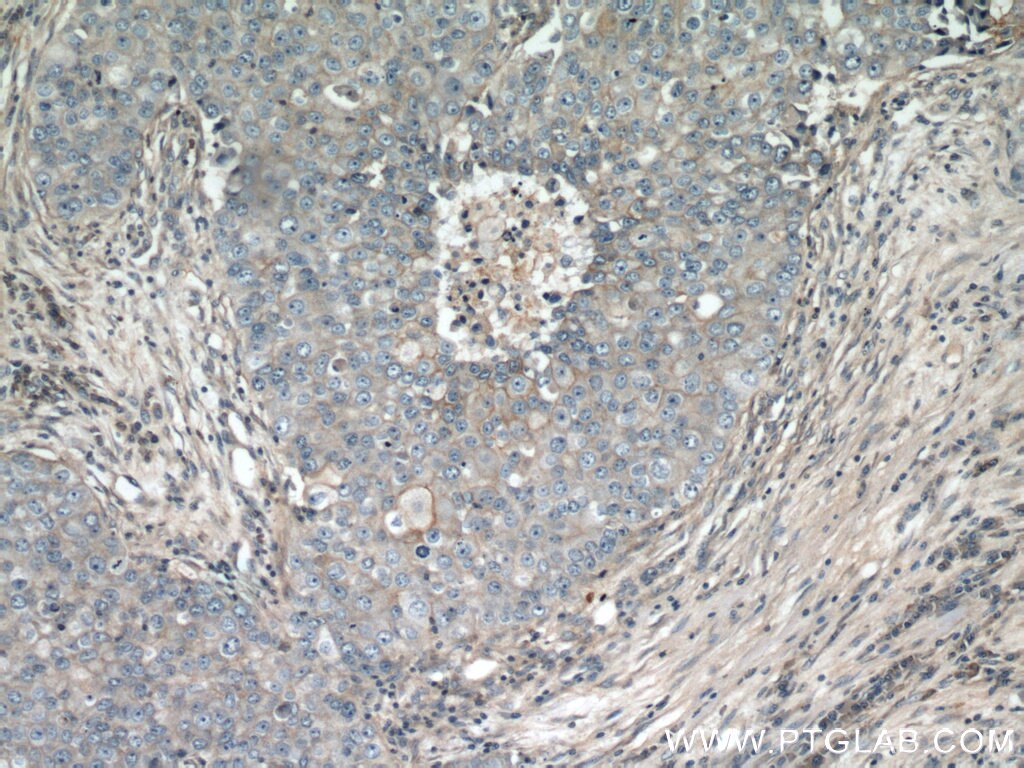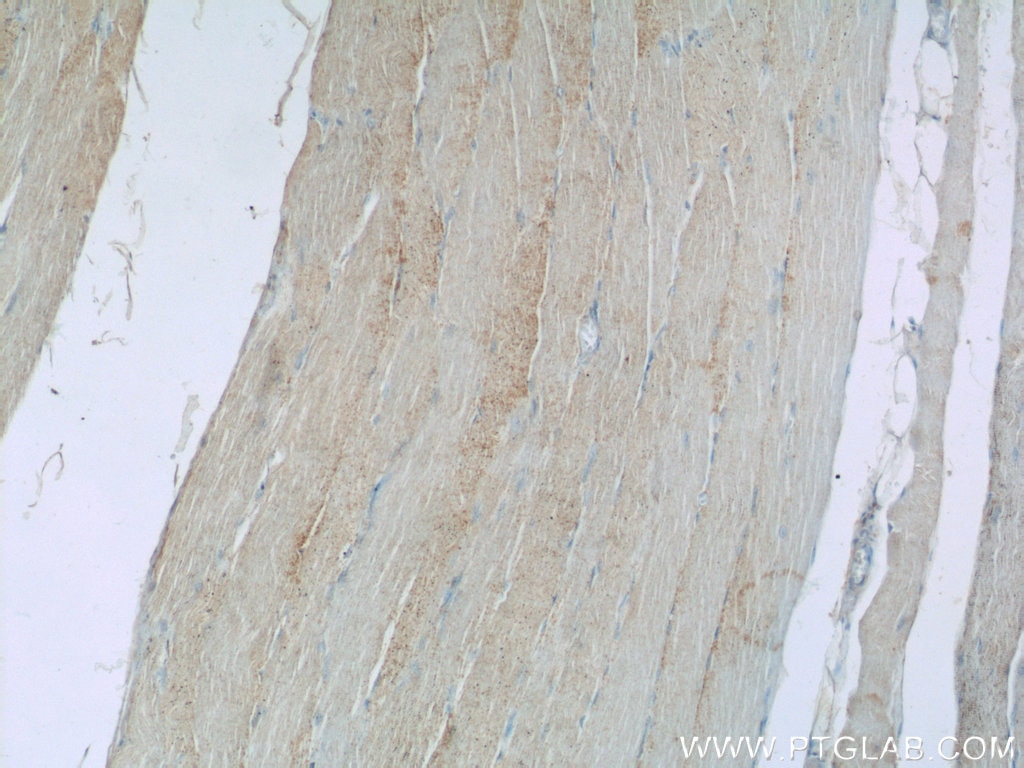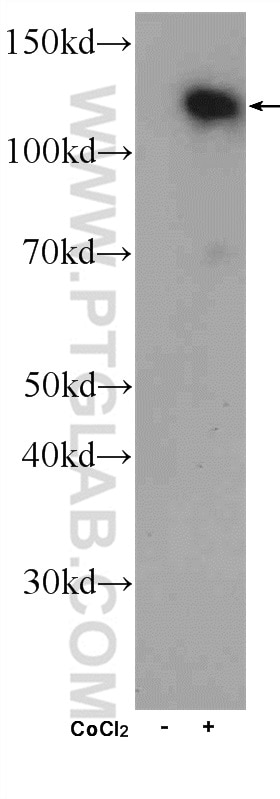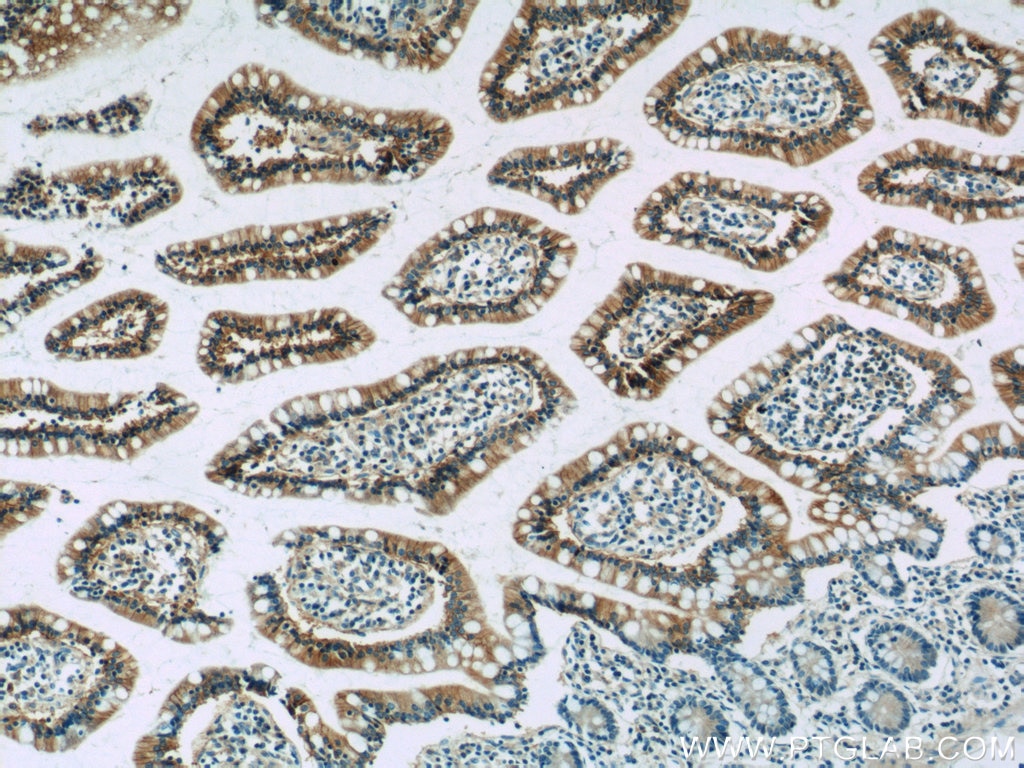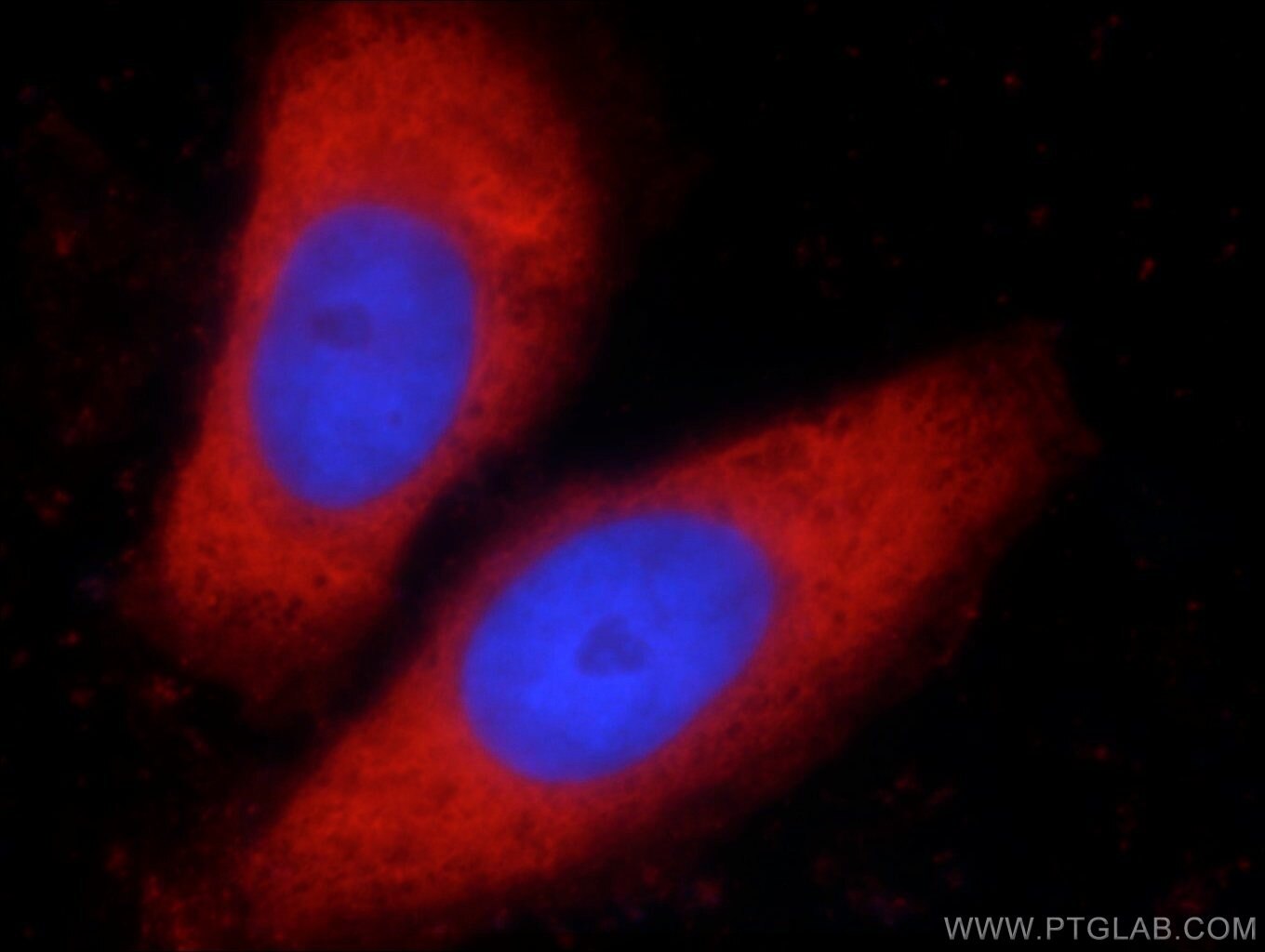GLUT3 Polyklonaler Antikörper
GLUT3 Polyklonal Antikörper für IF, IHC, WB, ELISA
Wirt / Isotyp
Kaninchen / IgG
Getestete Reaktivität
human, Maus, Ratte und mehr (1)
Anwendung
WB, IHC, IF, ELISA
Konjugation
Unkonjugiert
Kat-Nr. : 20403-1-AP
Synonyme
Galerie der Validierungsdaten
Geprüfte Anwendungen
| Erfolgreiche Detektion in WB | HEK-293-Zellen, C6-Zellen, HeLa-Zellen, HepG2-Zellen, Jurkat-Zellen, Maushirngewebe, Rattenhirngewebe, U-251-Zellen |
| Erfolgreiche Detektion in IHC | Maushodengewebe, humanes Lungenkarzinomgewebe, humanes Mammakarzinomgewebe, humanes Plazenta-Gewebe, Maushirngewebe Hinweis: Antigendemaskierung mit TE-Puffer pH 9,0 empfohlen. (*) Wahlweise kann die Antigendemaskierung auch mit Citratpuffer pH 6,0 erfolgen. |
| Erfolgreiche Detektion in IF | Caco-2-Zellen |
Empfohlene Verdünnung
| Anwendung | Verdünnung |
|---|---|
| Western Blot (WB) | WB : 1:2000-1:10000 |
| Immunhistochemie (IHC) | IHC : 1:2000-1:8000 |
| Immunfluoreszenz (IF) | IF : 1:200-1:800 |
| It is recommended that this reagent should be titrated in each testing system to obtain optimal results. | |
| Sample-dependent, check data in validation data gallery | |
Veröffentlichte Anwendungen
| KD/KO | See 1 publications below |
| WB | See 44 publications below |
| IHC | See 9 publications below |
| IF | See 12 publications below |
Produktinformation
20403-1-AP bindet in WB, IHC, IF, ELISA GLUT3 und zeigt Reaktivität mit human, Maus, Ratten
| Getestete Reaktivität | human, Maus, Ratte |
| In Publikationen genannte Reaktivität | human, Maus, Ratte, Ziege |
| Wirt / Isotyp | Kaninchen / IgG |
| Klonalität | Polyklonal |
| Typ | Antikörper |
| Immunogen | GLUT3 fusion protein Ag14203 |
| Vollständiger Name | solute carrier family 2 (facilitated glucose transporter), member 3 |
| Berechnetes Molekulargewicht | 496 aa, 54 kDa |
| Beobachtetes Molekulargewicht | 48-60 kDa |
| GenBank-Zugangsnummer | BC039196 |
| Gene symbol | SLC2A3 |
| Gene ID (NCBI) | 6515 |
| Konjugation | Unkonjugiert |
| Form | Liquid |
| Reinigungsmethode | Antigen-Affinitätsreinigung |
| Lagerungspuffer | PBS mit 0.02% Natriumazid und 50% Glycerin pH 7.3. |
| Lagerungsbedingungen | Bei -20°C lagern. Nach dem Versand ein Jahr lang stabil Aliquotieren ist bei -20oC Lagerung nicht notwendig. 20ul Größen enthalten 0,1% BSA. |
Hintergrundinformationen
Glucose transporter 3 (GLUT3), also known as solute carrier family 2, facilitated glucose transporter member 3 (SLC2A3), is a transporter protein regulating glucose transport across cell membranes and is a primary glucose transporter in neurons.
What is the molecular weight of GLUT3? Is GLUT3 post-translationally modified?
The molecular weight of GLUT3 transporter is 49-52 kDa and depends on the glycosylation pattern, which is tissue-specific (PMID: 9253355 and 9889355). GLUT3 can be N-glycosylated.
What is the subcellular localization of GLUT3?
Glucose transporters, including GLUT3, are multiple-pass integral membrane proteins. GLUT3 is present at the plasma membrane but is also a subject of recycling between the plasma membrane and endosomes.
What molecules can be transported by GLUT3?
Although the main substrate of GLUT3 transport is glucose, it can also transport mannose, galactose, and xylose.
What is the tissue expression pattern of GLUT3?
GLUT1 and GLUT3 are important for the transport of glucose into the central nervous system. While GLUT1 transports glucose through blood vessels and into astrocytes, GLUT3 is predominantly expressed in neurons, being their main glucose transporter (PMID: 9302083), and in testis (PMID: 18577699).
Protokolle
| Produktspezifische Protokolle | |
|---|---|
| WB protocol for GLUT3 antibody 20403-1-AP | Protokoll herunterladen |
| IHC protocol for GLUT3 antibody 20403-1-AP | Protokoll herunterladen |
| IF protocol for GLUT3 antibody 20403-1-AP | Protokoll herunterladen |
| Standard-Protokolle | |
|---|---|
| Klicken Sie hier, um unsere Standardprotokolle anzuzeigen |
Publikationen
| Species | Application | Title |
|---|---|---|
Mol Cancer CircEZH2/miR-133b/IGF2BP2 aggravates colorectal cancer progression via enhancing the stability of m6A-modified CREB1 mRNA. | ||
Cell Death Differ A viral interferon regulatory factor degrades RNA-binding protein hnRNP Q1 to enhance aerobic glycolysis via recruiting E3 ubiquitin ligase KLHL3 and decaying GDPD1 mRNA. | ||
Autophagy Newcastle disease virus degrades SIRT3 via PINK1-PRKN-dependent mitophagy to reprogram energy metabolism in infected cells. | ||
Cell Rep 16p11.2 haploinsufficiency reduces mitochondrial biogenesis in brain endothelial cells and alters brain metabolism in adult mice | ||
EMBO Rep METTL14 modulates glycolysis to inhibit colorectal tumorigenesis in p53-wild-type cells |
Rezensionen
The reviews below have been submitted by verified Proteintech customers who received an incentive forproviding their feedback.
FH balawant (Verified Customer) (12-25-2023) | This antibody is very specific and has no background.
|
FH Hua (Verified Customer) (02-03-2023) | This antibody works ok. There is one strong non-specific band around 40 kDa.
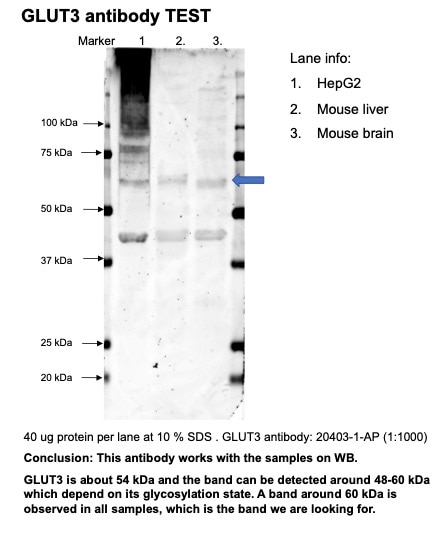 |
